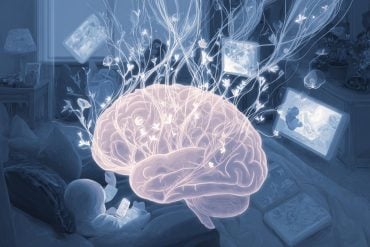Summary: A new study reveals that oxytocin’s ability to enhance social behavior depends heavily on the recipient’s motivation. In rhesus monkeys, the hormone boosted and sustained social decision-making only when the animals were already inclined toward social engagement.
Brain scans showed increased activity and stronger communication between the basolateral amygdala and anterior cingulate cortex during these motivated states. These findings may explain why oxytocin treatments yield mixed results in humans and highlight the need for more personalized therapeutic approaches.
Key Facts
- State-Dependent Effects: Oxytocin only boosted social behavior in already socially motivated monkeys.
- Neural Coordination: Enhanced activity and communication between the BLA and ACC supported sustained social engagement.
- Personalized Potential: Results suggest oxytocin therapies may need to align with a patient’s current social motivation.
Source: SfN
Oxytocin promotes social behaviors and helps maintain relationships. But clinical trials in patients with autism show variability in how consistently oxytocin improves these behaviors.
Steve Chang, from Yale University, led a study to explore how oxytocin influences brain activity to shape social behavior in rhesus monkeys and why its effects are so variable.

This work is featured in Journal of Neuroscience’s Central Questions for Social Neuroscience Research Special Collection.
The researchers focused on the basolateral amygdala (BLA) and the anterior cingulate cortex (ACC) because these brain areas process reward and integrate information during social decision-making.
Delivering oxytocin directly into the BLA had state-dependent effects; when monkeys were socially motivated prior to oxytocin exposure, the hormone maintained socially beneficial decisions and social task behavior over a longer time period, but oxytocin didn’t influence the same monkeys when they were less motivated.
Brain activity supported these results showing that oxytocin increased BLA and ACC activity only when monkeys were socially motivated.
Activity in the BLA and ACC was also more coordinated during prolonged social states, suggesting that oxytocin may stabilize communication in this pathway to sustain social behavior.
Says Chang, “We previously found that communication between these brain areas is important for social reward and behavior. So, the link between enhancement of this signal and prolonged social behavior was interesting to see.”
Elaborating on clinical implications, Chang adds, “We have to be more careful and not just use a standardized approach. Even within individuals, there are variations in the effectiveness of oxytocin treatment! It may be important to individually tailor treatments.”
About this social neuroscience research news
Author: SfN Media
Source: SfN
Contact: SfN Media – SfN
Image: The image is credited to Neuroscience News
Original Research: Closed access.
“Oxytocin in the Amygdala Sustains Prosocial Behavior via State-Dependent Amygdala-Prefrontal Modulation” by Steve Chan et al. Journal of Neuroscience
Abstract
Oxytocin in the Amygdala Sustains Prosocial Behavior via State-Dependent Amygdala-Prefrontal Modulation
Prosocial behaviors are crucial for maintaining primates’ complex social relationships. As central regions involved in social decision-making, the basolateral amygdala (BLA) processes social salience and value, while the anterior cingulate cortex (ACCg) integrates social information to guide decision-making.
Oxytocin, a key modulator of social behavior, can influence both prosocial behavior and neural activity in these regions, but the precise mechanisms remain unclear.
We investigated oxytocin’s effects on prosocial behavior and neural activity by infusing oxytocin or saline into the BLA (Oxt-BLA, Sal-BLA) and examining the effects of Oxt-BLA on prosocial decisions, BLA and ACCg neural activity, and the coordination between the two regions in male rhesus macaques.
We found that Oxt-BLA’s behavioral effects were state-dependent: during high prosocial states, it sustained prosocial choices and task engagement, counteracting the natural decline seen in the control condition.
However, during low prosocial states, Oxt-BLA had minimal behavioral effects. At the neural level, Oxt-BLA enhanced BLA and ACCg activity for prosocial choices only during high prosocial states.
Importantly, Oxt-BLA maintained stable BLA-ACCg coordination during high prosocial states, preventing the decline in communication observed in control conditions.
These findings demonstrate that oxytocin’s ability to sustain prosocial behavior depends on social motivational state.
These results support that oxytocin processing in the BLA acts as a state-dependent neuromodulator that enhances BLA and ACCg neural responses and maintains BLA-ACCg communication to guide prosocial decisions.






